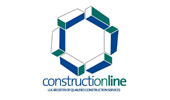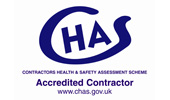Screed Repair
Screed Repair
I’m Andy Parkin, Managing Director of the Multi-Award Winning Speed Screed. I’m here today to talk about a very touchy subject at times, very stressful, and that is screed repair.
Fixing The Problem – Screed Repair
With any screed problem, we need to find out why your floor needs a screed repair in the first place, and to treat the cause, not just the symptom of why the screed has been damaged. We need to look at the possible reasons as to why it could fail, and there is quite an extensive list, but I think it is important to understand why, as the thing you don’t want to do is carry out a screed repair, and then end up with the same issue at a later date.
Materials
It could be just wrong materials, or the wrong screed that has been specified for a particular project, and it does not meet the requirements.
- Strength – too weak
- Thickness – too thin
- Cement – too low strength
- Sand – incorrect grading
There could be a multitude of reasons as to why it is unsuitable, and so it is important to make sure that the correct screed is specified in the first place.
If you have the correct, can you obtain the minimum/maximum depths? All screeds have a minimum depth requirement for each product, and so have you got the coverage? Sometimes you may have the coverage in the majority of the areas, but you end up with high spots that don’t comply. It is important to conduct a survey of the area to determine the available depths. When a screed is too thin a screed repair may not be the solution.
Structural Substrate
The substrate is paramount, the screed is only going to be as good as the substrate that it is laid onto.
When laying screed the substrate needs to be:
- Needs to be sound – no crumbling
- Free from contamination – oils, grease, foods, dirt, curing agent, laitance (when bonding)
- Insulation needs to stable – if the insulation is rocking then you have a problem, it needs to be tightly butted.
- Gaps in insulation – as you start to compact a sand and cement screed, the force can open up the boards, and screed is pushed into the gaps in between the boards. So not only have you got an issue with heat loss, you have a weak spot for the screed.
Mix Water
When the screed was mixed, has there been too much water introduced? Is it too wet? Or has there been too little water put in and you are not getting full hydration of the cement? There are two reasons for adding water into a screed mix.
- To react with the cement particles, this process is known as hydration. If there is not enough water, then not all the cement particles hydrate and thus overall strength is reduced.
- Placement of the screed, this allows the screed to be shaped and levelled. Workability of the screed is directly effected by water content.
Too little water
- Struggle to finish
- Weak and friable surface
- Poor compaction
- Not all cement will hydrate
Too Much Water
- Poor finish
- Weak, dusty and friable surface
- Increased shrinkage cracking
Screed Curing
As we have just discussed water is very important for the screed, and the loss of water when the screed has been laid needs to be controlled by “curing”. The most popular method of curing screed is to use a plastic membrane to retain moisture. A liquid curing membrane can be sprayed onto the surface to do the same job as a plastic membrane.
The majority of cementitious screeds need a membrane over to keep the moisture within the screed, so it is available to hydrate the cement.
A lack of curing may cause:
- Weak and friable surface
- Not all cement will hydrate
Poor Mixing
We often see teams mixing onto a board on the ground, with a shovel, or straight into a wheelbarrow. Free fall site mixers are used on a regular basis, and this promotes the “balling” of the screed. It’s not going to mix a semi-dry mix screed correctly.
There needs to be good site practice, using the appropriate machine. It could be a paddle mixer, screed pump, or a forced action mixer.
Mix Proportions
When mixing, there needs to be the correct proportions of sand and cement, there might not be enough cement, and you could end up with a weak screed. Or the wrong grade or poor quality of sand.
Compaction
Any semi-dry screed needs to be well compacted (just like a sand castle). Screed needs to be compact in layers, if the depth is more than 50mm. If you have 100mm, that would be two layers. Failure to compact correctly and you may end up with a nice looking surface, but then underneath it is just weak and friable.
Site Traffic
Often you will see screeds that are trafficked too early, that could be foot traffic, loaded beyond their current strength, and point loading. Once the screed matrix is damaged, it will continue to breakdown, and then finally it may turn into powder and dust over time.
Stress Relief Joints
As screed dries it will shrink, and you may need stress relief joints. If they have not been sufficient, or none used at all, then you may experience shrinkage cracking. If there are movement joints in the substrate, they need to be mirrored into the screed.
Perhaps the project didn’t have any edging strips? As the screed shrinks, the strips allows for some of this movement.
Non-Wearing Screed
Levelling screeds are generally non-wearing, and should be protected from the point of laying till the floor coverings go down. If not protected, the surface will suffer damage, such as point loading, step ladders, which will cause damage to the matrix. Always protect the floor screed until the coverings go down.
Thermal Cracking
When commission underfloor heating in a screed, there will be thermal movement. If the stress relief joints are not in the correct place, or perhaps not used at all, the screed may crack.
Building Movement or Heave
Is the substrate moving? Or perhaps the building is moving in someway? Are you getting cracking and heave from the floor? This would point to external factors at work.
Heave is a good example of just repairing the “symptom” and not dealing with the cause. Just repair the screed and you could find yourself exactly in the same position in a matter of weeks. You need to identify what the cause, before repair.
Repairs
Depending on the cause, the solution may be different, but to give you an overview, I’m just going to run through the main types of screed repair.
Shrinkage cracking is the most frequently seen condition in screed. The cracking by itself isn’t normally anything to cause alarm, as the screed has basically put it in its own joints (jointed itself). Unless you have isolated pieces of screed, it may not need attention. The British standard basically states that hairline cracks generally do not normally need to be repaired, so if you’ve got a hairline crack, the rule of thumb is half a mm, an easy way of testing this is if you can’t get a credit card into the crack, then it probably doesn’t need to be repaired. If it is a shrinkage crack and you are laying carpeting on, then you probably don’t need a screed repair.
If laying tiles or thin coverings, you wouldn’t want the cracks mirroring into the floor coverings.
Shrinkage Crack Resin Screed Repair
You have a crack that you are going to repair, what you might need to do is to widen it at certain points so you can ensure that you can get the product into the crack. As we mentioned above hairline cracks are generally not repaired, to even think about repairing hairline cracks, they would need to be opened up, grinding the crack open, causing quite a bit of damage before repairing again.
It is always worth thinking if the crack really needs to be repaired or not. A screed repair needs to add something to the screed.
With an open crack you would pour a low viscosity, two-part resin into the crack. If the crack is fairly wide and you can fill the crack first with kiln dried sand to bulk out the gap, before pouring in the resin.
After waiting 15 minutes, the resin should have settled, and at this point pour further resin into the crack. You may have to top it up more than once. The joint will end up being stronger than the original screed, with this screed repair.
Weak Screed Penetrating Resin
For screed that is weak, not enough cement, not fully cured, localised damage and general traffic wear. A penetrating resin may be the solution.
This is a really low viscosity resin, that is poured on top of the screed. Sand and cement, should be porous enough to accept the resin and allow it to sink in. If you have smoothing compound on the screed, it will need to be removed to open up the surface. Sometimes the screed will need or shot blasting, to open the surface up.
The resin penetrates and strengthens the screed.
That solution is rather expensive and actually costs more than the original screed laid. The cost effect way might to be replace the screed, however where downtime isn’t an option then this is the perfect screed repair solution.
Often removing the screed, when you have significant damage, may be just as cheap as repairing. It may be a case of just looking at isolated areas. A typical area where damage occurs is at the main entrance to the building. If there has been little or no protection, with all the site traffic coming in and out, the screed may have broken down.
Rather than trying to repair that small area, you might consider just cutting out the damaged section, and replace it with new screed.
I hope this gives you a few ideas with regards to screed repair. Each issue needs looking at individually, and if you have any further question please get in touch. We love to help!
Our Accreditations
About Speed Screed
Speed Screed Limited was founded on the key principle of providing first-class customer service. It has since built itself an impressive reputation for delivering high-quality projects across the United Kingdom.
The company’s success is built on its belief in quality work, attention to detail, on-time completion, strong working partnerships and the recruitment of top-level staff. about us >








